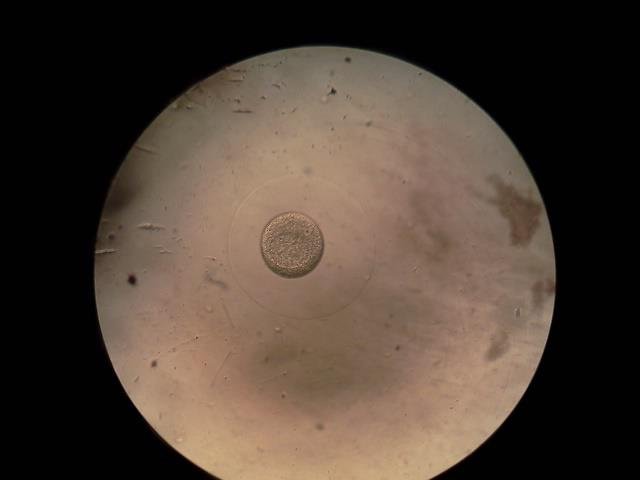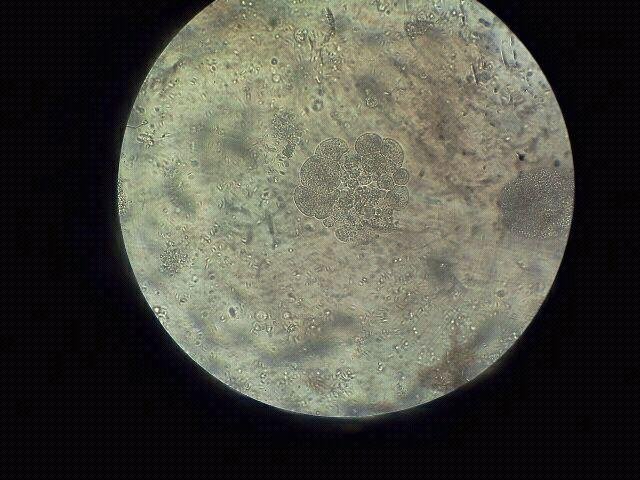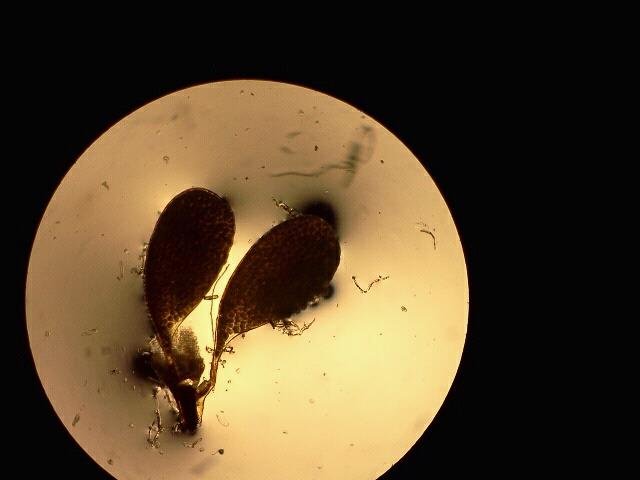A view of microscopy 🤓🔬🔬
Today I leave you some of my photographs of objects seen under the microscope with a description of what is observed at 80x and 100x

Polymesoda is a mollusk that reaches 40 mm. Creamy white color, frequently with purple or grayish tints, light or dark brown periostraque; interior whitish to dark purple, usually with darker radial stripes at both ends.
Shell rounded on the front and angled on the back, with three cardinal teeth and two lateral teeth on each valve. On sandy bottoms they have more convex valves and more developed hinge teeth than on muddy bottoms. The outer surface has defined concentric chords. the oocyte is a female germ cell derived from the oogonia and which gives rise to the ovum.
https://es.wikipedia.org/wiki/Polymesoda_artacta

Gastrulation is one of the stages of early embryonic development by which the trilaminar germ disc is formed, a structure with 3 differentiated embryonic layers that will give rise to all the organs and tissues of the embryo.
https://www.reproduccionasistida.org/gastrulacion/

As a Biologist I had so many experiences in my profession that marked my life, I can fully say that although microscopy is not my thing! I can say that I learned to recognize the hard work that my colleagues do who spend so many hours under a microscope and who fight to change the history of modern science!

*Calotropis (Calotropis procera (Aiton) W. T. Aiton) is a spreading shrub or medium-sized tree reaching 2.5 to 6 m in height. It has a deep taproot, 3-4 m deep, and a secondary root system with woody lateral roots that may rapidly regenerate adventitious shoots when the plant is injured. The stems are crooked and covered with a fissured corky bark. The grey-green leaves are 15-30 cm long and 2.5-10 cm broad and have a succulent and waxy appearance, hence the name procera, which means wax in latin (Ecoport, 2011; Ecocrop, 2011; Orwa et al., 2009). The flowers are pentamerous, small, cream or greenish white at the base and purple violet at the extremity of the lobes. The fruit is a fleshy and inflated, up to 10 cm or more in diameter (Orwa et al., 2009; Kiew, 2001). In this microscope shot we can see the pollen sacs,
https://www.feedipedia.org/node/588
Interesting study of life under the microscope, being able to photograph with precision helping us understand the biology happening all around us @oscurity